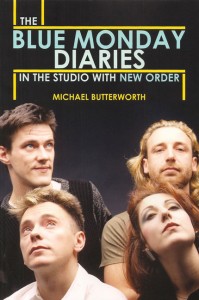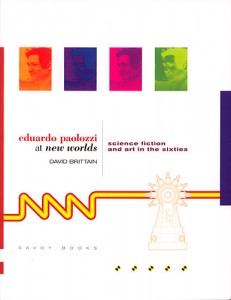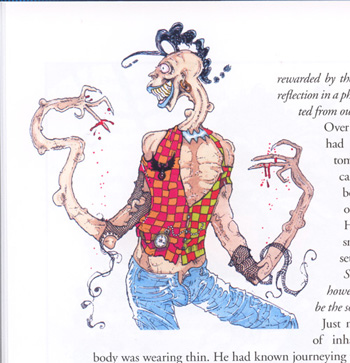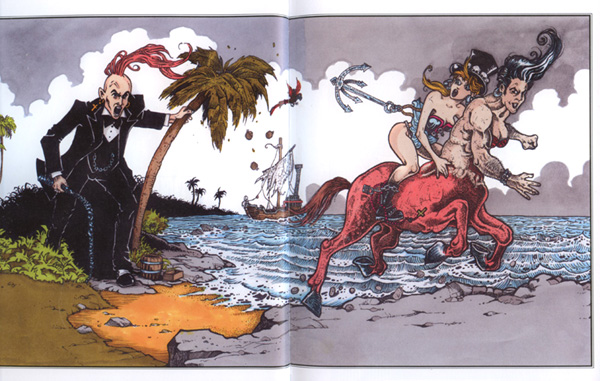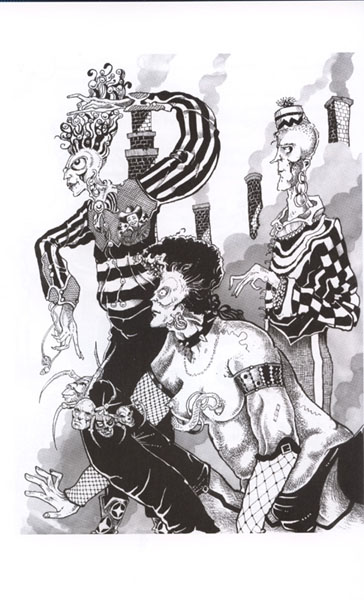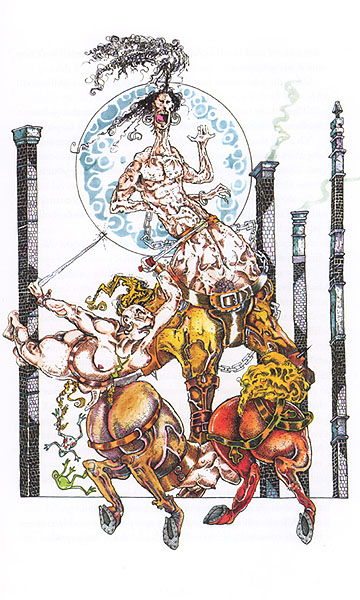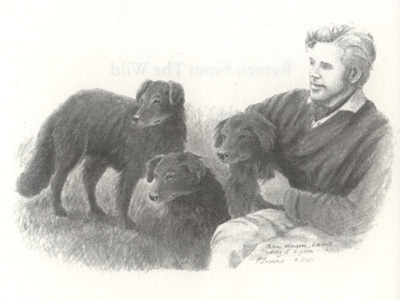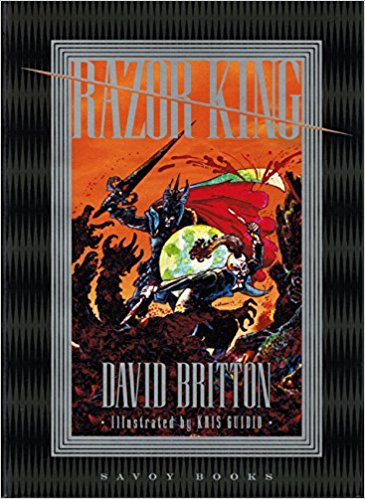
Razor
King by
David Britton, Savoy Books, Oct 2017, 300pp, £20.
Razor King is
David Britton’s seventh novel, the latest in his series of
absurdist novels about the Jewish Holocaust.
The
novel has a loose narrative of sorts, but mainly consists of a series
of fantastical series of scenes and descriptions of three or four
main characters, the razor-wielding Lord Horror, engaged in
dispatching Jews with his razor, and his two grotesque associates
Meng, a sexually voracious half-man half-woman, and his emaciated and
more reflective brother Ecker. There is also Meng’s pubescent
daughter, the winsome La Squab. There are also two talking cars with
libidos and an alien boy made of confectionery. The settings involve
among other things crematoria, the Wild West and a ship crewed by
rats. Britton certainly has a vivid imagination and a knack for
putting his creations on the page.
Needless to say, Britton does
not in any way endorse anti-semitism, but is attempting to expose its
psychopathic and un-empathetic nature.
Continuing a trend begun
with La Squab in 2012, Razor King is illustrated throughout by Kris
Guidio, this time entirely in full colour. The book contains thirty
double-spread full colour illustrations, depicting Britton’s
grotesque characters, along with crematoria, Ken Reid’s elf
characters Fudge and Speck (from Reid’s comic book republished by
Savoy) and various characters redolent of Edgar Rice Burrough’s
books. The images contain some cartoon nudity.
Let’s be clear, this book is for adults only, and further to that, it’s for adults not easily offended. This is a brutal satire on anti-semitism, and everything in it references Hitler and the Jewish holocaust. While reading it however, I was forcibly reminded of a more recent event, the ethnic cleansing of the Rohinga from Burma.
‘Razor King’ is a significant exercise in transgressive speculative fiction, extending on an established tradition, and deserves some serious attention. The artwork alone would make it worth examination. (CD).
